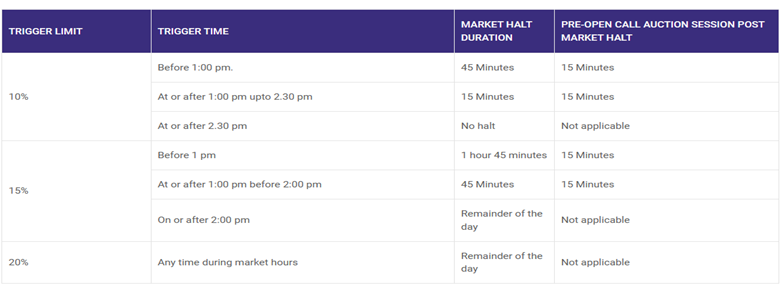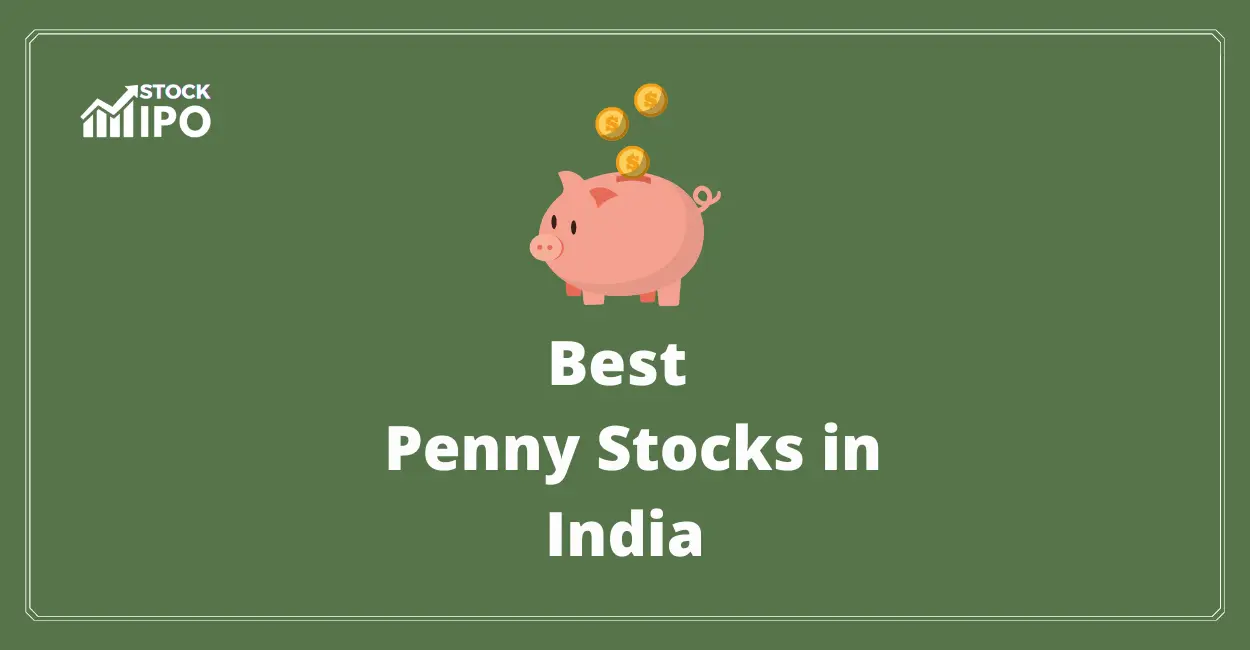Market volatility is what makes an investor hesitant to invest in the stock market. This is why the majority of investors avoid investing in volatile stocks. However, the new and inexperienced investor who enters the stock market with the expectation of making huge returns ends up trapped in the midst of market volatility. As a result, in order to protect these unsuspecting investors, the Securities and Exchange Board of India has enacted rules known as circuit limits, which are being implemented in almost every stock category.
Further, let’s know more about the circuit limits imposed by the SEBI.
What are Circuit Limits?
Circuit limits, also known as price bands, are safeguards set by the exchange to prevent large price movements in stocks in a short period of time. When the price of an instrument reaches the exchange’s upper or lower circuit limit, orders for that stock or contract will remain pending at that circuit price.
The price band specifies the price range in which the stock can be traded on that particular day. The circuit limits, which range from 2% to 20%, are determined by the liquidity, volume, and stock category. Circuit limits comprise two components, the first one being the Upper circuit limit and the other one being the Lower Circuit Limit. Let’s discuss them in detail.
What are Upper Circuit Limits and Lower Circuit Limits?
In the stock market, an upper circuit is the highest level of price to which a stock can move in a single day. When a stock reaches its upper circuit, it indicates that there are no sellers and only buyers available.
Depending on the stock exchange’s criteria for a given stock, the upper circuit limit may be set at 20%, 10%, or 5% of the previous day’s closing price. Once the stock reaches the upper circuit limit the trading in that particular is put to a halt as there are no sellers to execute orders.
As per the example given below, Burger King has reached its upper circuit for the day, that’s why there are zero selling orders. As a result, trading in Burger King is put to a halt.

The lower circuit is a price limit imposed on individual stocks or the entire market to protect investors from sudden and significant drops in the value of their investments. This measure is designed to limit excessive price fluctuations and is the inverse of the upper circuit, which prevents stocks from experiencing rapid price increases.
When a particular stock reaches its lower circuit limit, the buying orders become 0, unlike the upper circuit limit where the selling orders become zero.

For instance, Here Rain has reached its lower circuit for the day due to which the price trading in Rain has been stopped.
Why do we need these limits?
- Volatility: The first and foremost reason why SEBI has introduced the circuit limits is due to increasing volatility in the stock market. Mostly unstable stocks or companies with small caps are highly prone to speculation. As a result, the volatility in these stocks are highly active which is far more dangerous for innocent investors.
- Stock Manipulation: Market manipulation is the intentional deception and defrauding of investors by artificially influencing supply or demand for security and driving its price up or down. Those who orchestrate price manipulation profit at the expense of other investors. Setting up the circuit limit or price band prevents such stock manipulation.
- Protect Innocent Investors: By placing circuit limits in every stock, SEBI is able to minimize a large amount of risk for retail investors. In case the particular stock reaches any of the circuit limits the price trading for the day is stopped. This protects an investor from getting trapped in the volatility of a particular stock.
Are these Circuit limits the same for every stock?
There are three categories of stocks traded in the Indian Financial Market. They are:
- Non-F&O stocks: Almost 90% of the stock belongs to this category. For each and every Non-F&O stock circuit limit is fixed by Exchanges on a daily basis. The circuit limits of each stock could range between 2%,5%, 10% and 20%. Maximum it could go up to 20%, not more than that and the minimum it could start from 2%.
- F&O stocks: F&O stocks refers to those stocks which are traded under the futures and options segment. Stocks traded in the Futures and Options segment do not have circuit filters because derivatives are available on them. The purpose of introducing derivatives on any share is to provide market hedging opportunities. So, even if a stock has moved more than 10% or 20%in either direction, a trader/investor can hedge his/her position by trading in options/future contracts.
- Market Wide: This category comprises benchmark indices most prominently Nifty and Sensex. These are the market indices which show the overall view and sentiment of the market both for the day and for the longer term. The circuit limit applies to the widely followed Sensex and Nifty at three stages of index movement: 10%, 15%, and 20%.

Unlike stocks, when the value of market indices reaches any of the circuit limits the trading in the indices is restarted after a halt of a short duration. As prescribed in the above table.
Also Check: What are CE and PE in Stock Market?
How to check the Circuit limit for any stock?
In order to check the circuit limits associated with each and every stock (Except F&O). It is advised to go through either the NSE website or the BSE website. They are basically displayed in the form of a price band.
In the above chart, the Emami Ltd price band is displayed as Emami ltd is a Non-F&O stock, therefore, the band of 20% is being displayed. This means the price can Neither go above 20% of the current price Nor below 20% of the current price of the share in a day.
Conclusion
In the end, we should appreciate our stock market regulator body (SEBI), that they have framed certain protective rules. Which has made the market safer for both traders and investors.







